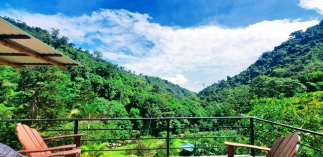High in the Costa Rican mountains, where the emerald embrace of the rainforest gives way to open pastures and golden grasslands, you might encounter a fascinating avian visitor – the Upland Sandpiper. Unlike its shorebird cousins who grace the coastlines, this enigmatic bird thrives in the heart of the country’s dry season havens.
The Upland Sandpiper, with its scientific name Bartramia longicauda, is a true anomaly. While classified as a sandpiper, its preferred habitat is far from mudflats and sandy beaches. Often mistaken for a curlew due to its slender build and long neck, this bird boasts a unique charm that will leave you enthralled if you’re lucky enough to spot it.
A Master of Camouflage:
Imagine a bird clad in a mottled brown cloak, perfectly blending with the dry grasses. That’s the Upland Sandpiper! Its speckled body and understated markings make it a master of disguise. Add to this its preference for staying low to the ground, and you have a bird that can vanish before your very eyes.
But don’t despair, eagle-eyed birders! There are ways to increase your chances of spotting this elusive creature.
Listen for the Whistle of the Wind:
The Upland Sandpiper’s most distinctive feature might not be visual. This bird possesses a hauntingly beautiful call, often described as a “wolf whistle.” It’s a long, rising whistle followed by a second, wavering note. This ethereal melody, sometimes delivered in flight, can pierce the stillness of the grasslands, alerting you to the sandpiper’s presence.
A Dancer in the Sky:
During the breeding season, the male Upland Sandpiper takes flight in a spectacular display of courtship. It performs a mesmerizing aerial dance, soaring high above the grasslands with shallow, fluttering wingbeats. Watch for this mesmerizing performance, often accompanied by the bird’s melodic calls, for an unforgettable avian ballet.
A Feast on the Ground:
Unlike its shorebird relatives who probe the mud for crustaceans, the Upland Sandpiper is an expert terrestrial hunter. With its quick, jerky steps and lightning-fast jabs of its short bill, it preys on grasshoppers, beetles, and other insects that abound in the dry season grasslands.
A Transient Treasure:
The Upland Sandpiper is a migratory bird, gracing Costa Rica’s highlands only during the breeding season, roughly from March to August. So, if you’re planning a birding adventure to our mountain retreat during these months, keep your eyes peeled (and ears tuned) for this fascinating visitor.
Spotting an Upland Sandpiper might take a bit of patience and keen observation skills, but the reward is a truly unique encounter with a bird that embodies the hidden wonders of Costa Rica’s mountain ecosystems.
For more information, please view our comprehensive guide about the birds of Costa Rica







